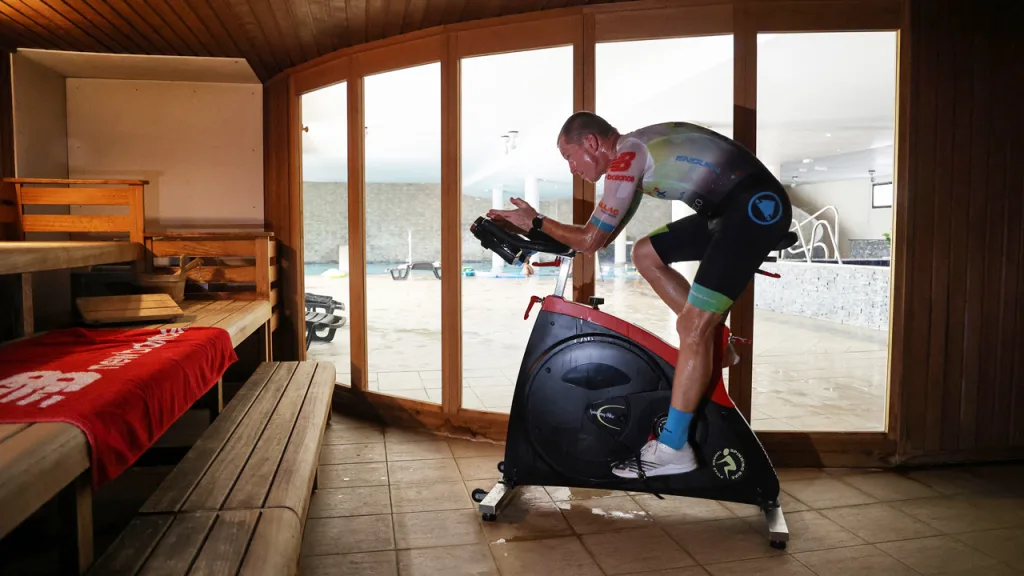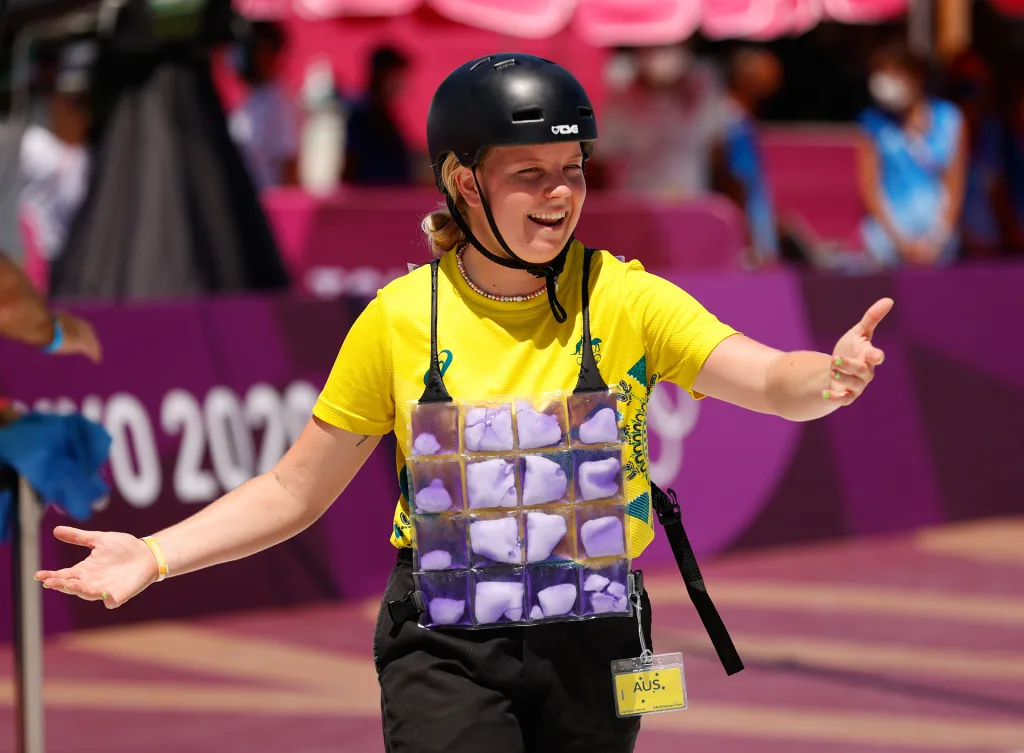Earlier this year, inside a small “heat acclimation chamber” at a London university, the temperature was cranked up to 95 degrees Fahrenheit while runners trained on treadmills. They were preparing for the Marathon des Sables—an ultramarathon that covers 160 miles over seven days in the Sahara Desert. It’s an extreme event. But it’s the type of training that’s becoming increasingly common for any outdoor athlete as the planet heats up.
For most competitions, “we have this expectation now that it’s likely that we could get a really warm day,” says Fiona O’Keefe, a marathon runner who will compete in the Paris Olympics. The past 12 months have been the hottest on record globally. As the temperature rises, so does the risk of extreme heat. The heat wave that hit Mexico this May, for example—with temperatures so hot that monkeys fell dead out of trees—was 35 times more likely because of climate change than it would have been two decades ago.
For athletes, preparing to compete in hot weather often means traveling to the competition’s location to train in advance. But many athletes are also now changing their training at home. “This season, I started intentional heat training to prepare for hot races around the world,” says Christopher Blevins, a mountain biker who is also competing in the Olympics. “This means sitting in a sauna after rides or riding on a stationary bike with the heat on full blast and multiple layers and jackets on. It’s not fun by any means, but it’s necessary to prepare for the increasingly hot races we have in the summer.”
Getting in a hot bath or a sauna after exercising can help the body adapt to heat quickly, says Robbie McIntyre, an exercise physiologist at St Mary’s University in London, the school that has a heat acclimation chamber. “Even though you’re not exercising in the heat, you still get those heat-acclimation adaptions,” he says. The positive effects can happen as few as three days after this type of training begins, though some athletes may train for a couple weeks in advance of a competition that’s likely to be hot.

At aid stations in hot races, runners now often have extra supplies beyond water or sports drinks, including sponges and ice packs. “We’ve talked about having hats that are dunked in ice water,” O’Keefe says. “All of that is an additional consideration for planning going into a major race that might be really hot.”
“From fans to ice packs and vests for my head, forearms, and body, my kit has increasingly become inundated with gear to keep me as cool as possible to compete and train in hotter and hotter conditions,” says Jesse Grupper, an Olympic climber. “I used to be able to show up and train and not worry about the temperature.”
Heat affects performance. Of course, it can also be dangerous. At the last summer Olympics in Tokyo, the heat index reached 99 degrees Fahrenheit at one point. One tennis player had to leave the court in a wheelchair after suffering heat stroke. Others vomited and fainted after competing. Russian tennis player Daniil Medvedev took multiple breaks on the court, later saying that he couldn’t breathe properly and “was ready to just fall down on the court.” In the U.S., nearly a dozen football players at the student and professional level have died of heat stroke over the past few years.

As climate change continues, the risk will keep increasing. One 2016 study found that by 2080, if carbon emissions stay high, most cities will be too hot to host the Summer Olympics. (The same thing is true of Winter Olympics because of melting snow.) Extreme heat waves are already beginning to disrupt events. Last October, a marathon in the Twin Cities was canceled because of a dangerous heat wave. The current forecasts for Paris during the Olympics’ two-and-a-half weeks are moderate, though that could have easily been different; a few years ago, a heat wave pushed temperatures in the city to well beyond 100 degrees Fahrenheit. The Olympics’ “extreme weather policy” says that when the temperature hits around 86 degrees F, there can be a 10-minute break. At around 90 degrees F, referees and medical staff can decide whether a competition should be suspended completely.
Some athletes now double as climate activists. O’Keefe, Blevins, and Grupper are members of Protect Our Winters, an organization that fights for better climate policy. “I think it’s really important that we’re having these conversations and getting more awareness around how climate change is affecting sport,” O’Keefe says. “Athletes can be an avenue to advocating for systemic solutions.”
Other athletes have argued against fossil fuel sponsorship. The Paris Olympics bills itself as “fossil-fuel free,” but some national Olympic and Paralympic teams have fossil fuel sponsors. Oil and gas companies have also sponsored everything from FIFA to British Cycling. “I really think fossil fuel sponsorship is the new cigarette sponsorship, where they are advertising a product that they know is destroying our home planet and our futures,” David Pocock, the former captain of the Australia rugby union, said after an oil company sponsored the Australian team. “It’s hard to stomach.”